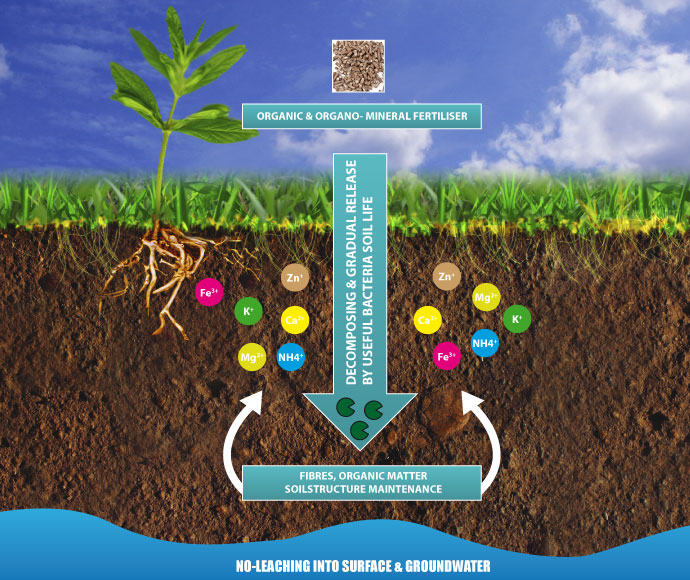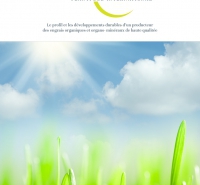Rendapart, what are organic fertilisers and organic-mineral fertilisers – Definition
Organic fertilisers are build out of natural components of animal or/and vegetable origin. Raw materials to choose from are f.e. bloodmeal, bonemeal, soyameal, feathermeal, Rock phosphate, vinasses, organic seaweed, hoof- & hornmeal,…
- Organic fertilisers or natural fertilisers do not contain in any way chemical additions.
- Organo- mineral fertilisers are organic fertilisers which were enriched with mineral nutrients to establish, in some circumstances a faster/easier mineralisation.
- Mineral (chemical) additional products can be : Urea nitrogen, potassiumnitrate,…
- Organo -mineral fertiliser contains at least 25 % organic matter with 40 % organic nitrogen.
Straight mineral fertilisers (mostly agricultural products) release their nutrients immediatly due to their form, specific composition and therefor their high solubility. Because of the fact that this type of fertiliser is highly soluble the danger of “leaching” occurs . The retaining capacity of soils to uptake inorganic nutrients is limited and depends on the compositon of the soil. Because of the leaching and runoff, the nutrients contaminate the groundwater.
Coated mineral fertilisers could mean a solution to this problem but are highly expensive. When mineral fertilisers are not coated or do not contain a complex to slow down their release, the conventional mineral fertiliser must be intensively applied to maintain a good plant growth.
How do organics work ?
Organics do not work better than chemical fertilisers, they work different. Organic and organo- mineral fertilisers need to be broken down by soil organisms (bacteria) to release the nutrients gradually to the plantroots. By doing this (2-4 week process) the release of bioactive compounds and humic substances in the soil optimalizes plantgrowth and root development.






